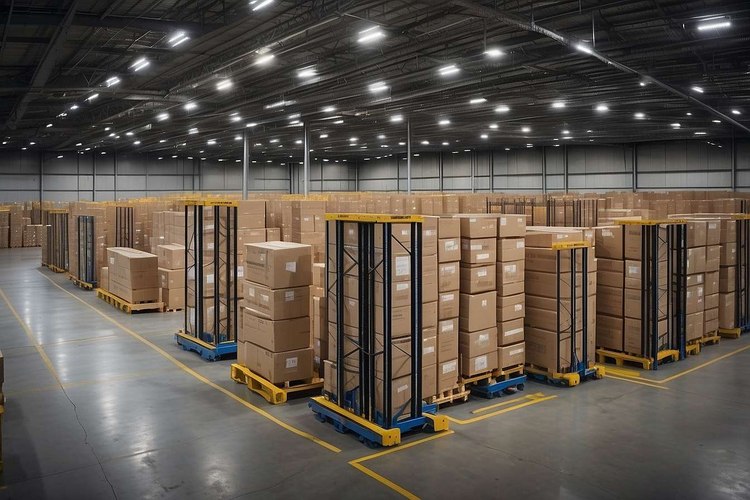Careers with Food Packing Companies in Australia
Australia's food packaging industry offers diverse employment opportunities across manufacturing, processing, and distribution sectors. This industry plays a crucial role in the country's economy, supporting both domestic consumption and export markets. Understanding the landscape of food packaging careers can help job seekers navigate this stable employment sector and identify potential career paths that align with their skills and interests.

What Employers Expect from Food Packaging Workers
Food packaging companies in Australia typically seek employees who demonstrate reliability, attention to detail, and physical stamina. Most positions require workers to stand for extended periods and perform repetitive tasks while maintaining quality standards. Employers value candidates who can work effectively in team environments and adapt to shift work schedules, including early morning, evening, and weekend shifts.
Basic literacy and numeracy skills are often essential, as workers need to read production schedules, safety instructions, and quality specifications. Many companies provide on-the-job training for specific machinery and processes, though previous experience in manufacturing or warehouse environments can be advantageous. Food safety awareness and willingness to follow strict hygiene protocols are fundamental requirements across all positions.
Physical requirements typically include the ability to lift boxes weighing 15-25 kilograms, perform repetitive motions, and work in temperature-controlled environments. Some positions may require workers to operate machinery or use handheld tools, making manual dexterity and basic mechanical aptitude valuable attributes.
Main Responsibilities in Food Packaging Roles
Food packaging positions encompass various duties depending on the specific role and company size. Common responsibilities include operating packaging machinery, conducting quality checks on products and packaging materials, and maintaining clean work areas according to food safety standards. Workers often need to monitor production lines, identify potential issues, and report equipment malfunctions to supervisors.
Documentation tasks form another significant component of these roles. Employees may record production quantities, batch numbers, and quality control data. Some positions involve inventory management, including tracking raw materials and finished products. Senior roles might include training new employees, coordinating with other departments, and participating in continuous improvement initiatives.
Packaging line workers typically handle tasks such as loading products into packaging equipment, adjusting machine settings for different product runs, and performing routine equipment maintenance. Quality control responsibilities include inspecting packaging for defects, ensuring proper labeling, and verifying that products meet weight and appearance standards.
Why the Sector Keeps Hiring Workers
The food packaging industry maintains consistent hiring patterns due to several structural factors. Australia’s growing population and changing consumer preferences drive demand for packaged food products. The expansion of convenience foods, ready-to-eat meals, and specialty dietary products creates ongoing employment opportunities in packaging facilities.
Export markets contribute significantly to industry stability, with Australian food products requiring specialized packaging for international distribution. This export focus supports employment in regional areas where many food processing facilities operate, providing jobs in communities that may have limited alternative employment options.
Seasonal variations in agricultural production create periodic surges in packaging activity, particularly during harvest periods for fruits, vegetables, and other perishable products. These seasonal patterns generate both permanent and temporary employment opportunities throughout the year.
The industry also experiences natural workforce turnover, as some workers use these positions as stepping stones to other careers or move between companies seeking better conditions. This turnover creates regular openings for new employees and advancement opportunities for existing workers.
| Position Type | Experience Level | Typical Hourly Rate Range | Key Requirements |
|---|---|---|---|
| Entry-level Packaging | No experience required | $22-$26 per hour | Physical fitness, reliability |
| Machine Operator | 1-2 years experience | $26-$30 per hour | Technical aptitude, safety awareness |
| Quality Controller | 2-3 years experience | $28-$35 per hour | Attention to detail, documentation skills |
| Team Leader | 3-5 years experience | $32-$38 per hour | Leadership skills, industry knowledge |
Salary ranges mentioned in this article are estimates based on current industry information and may vary depending on location, company size, and individual circumstances. Independent research is advised before making career decisions.
Career Progression and Development Opportunities
Food packaging companies often provide internal advancement pathways for dedicated employees. Entry-level positions can lead to specialized roles such as machine maintenance, quality assurance, or production supervision. Some workers transition into administrative roles, including production planning, inventory management, or human resources functions.
Professional development opportunities may include safety certifications, equipment-specific training, and leadership development programs. Larger companies sometimes offer apprenticeships or partner with vocational institutions to provide formal qualifications in food technology or manufacturing processes.
The transferable skills gained in food packaging roles can also open doors to employment in other manufacturing sectors, logistics companies, or food service industries. Experience with quality systems, workplace safety protocols, and production processes provides a foundation for diverse career opportunities beyond the packaging sector.
Understanding the food packaging industry requires recognizing that while employment opportunities exist across Australia, actual job availability varies by location and economic conditions. This information provides general career insights rather than specific job listings or guarantees of employment. Job seekers should research current openings through employment agencies, company websites, and local job boards to identify actual opportunities in their preferred locations.




